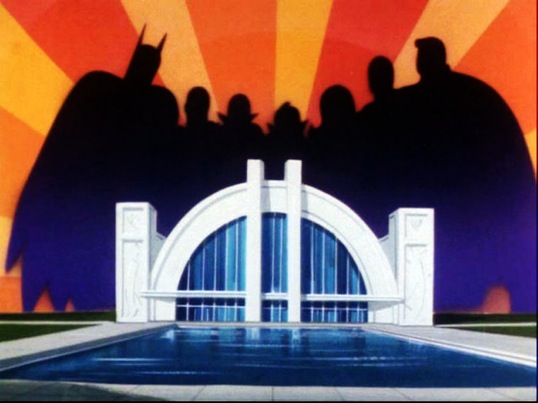Archive for October, 2011
Amplify The Social Benefits of Your Products
To do g ood for the planet and make lots of money (or the other way around), I think companies should shift from an economic framework to a social one. Green products are a good example. Facts are facts: today, as we define cost, green products cost more; burning fossil fuel is the lowest cost way to produce electricity and move stuff around (people, products, raw material). Green products are more expensive and do less, yet they sell. But the economic benefits don’t sell, the social ones do. Lower performance and higher costs of green products should be viewed not as weaknesses, but as strengths.
ood for the planet and make lots of money (or the other way around), I think companies should shift from an economic framework to a social one. Green products are a good example. Facts are facts: today, as we define cost, green products cost more; burning fossil fuel is the lowest cost way to produce electricity and move stuff around (people, products, raw material). Green products are more expensive and do less, yet they sell. But the economic benefits don’t sell, the social ones do. Lower performance and higher costs of green products should be viewed not as weaknesses, but as strengths.
Green technologies are immature and expensive, but there’s no questions they’re the future. Green products will create new markets, and companies that create new markets will dominate them. The first sales of expensive green products are made by those who can afford them; they put their money where their mouths are and pay more for less to make a social statement. In that way, the shortcoming of the product amplifies the social statement. It’s clear the product was purchased for the good of others, not solely for the goodness of the product itself. The sentiment goes like this: This product is more expensive, but I think the planet is worth my investment. I’m going to buy, and feel good doing it.
The Prius is a good example. While its environmental benefits can be debated, it clearly does not drive as well as other cars (handling, acceleration, breaking). Yet people buy them. People buy them because that funny shape is mapped to a social statement: I care about the environment. Prius generates a signal: I care enough about the planet to put my money where my mouth is. It’s a social statement. I propose companies use a similar social framework to create new markets with green products that do less, cost more, and overtly signal their undeniable social benefit. (To be clear, the product should undeniably make the planet happy.)
The company that creates a new market owns it. (At least it’s theirs to lose). Early sales impregnate the brand with the green product’s important social statement, and the new market becomes the brand and its social statement. And more than that, early sales enable the company to work out the bugs, allow the technology to mature, and yield lower costs. Lower costs enable a cost effective market build-out.
Don’t shy away from performance gaps of green technologies, embrace them; acknowledge them to amplify the social benefit. Don’t shy away from a high price, embrace it; acknowledge the investment to amplify the social benefit. Be truthful about performance gaps, price it high, and proudly do good for the planet.
Off Track
a
Did real kid stuff with kids?
Got real dirt on your knees?
Went for a walk, simply to walk?
Went outside and counted the stars?
Shut your eyes and listened to birds?
Spent seven days with just your spouse?
Traveled to meet an old friend face-to-face?
Sat quietly in your favorite spot for an hour?
a
What does that say?
The Supreme Court of Technology
 The Founding Fathers got it right with three branches: legislative to make laws; judicial to interpret laws; and executive to enforce them. Back then it was all about laws, and the system worked.
The Founding Fathers got it right with three branches: legislative to make laws; judicial to interpret laws; and executive to enforce them. Back then it was all about laws, and the system worked.
What the Founding Fathers could not realize was there was a powerful, pre-chrysalis force more powerful than laws, whose metamorphosis would exploit a gap in the three branch system. Technology has become a force more powerful than laws, and needs its own branch of government. We need a Supreme Court of Technology. (Think Ph.D. instead of J.D.)
Technology is the underpinning of a sustainable economy, an economy where citizens are well-educated, healthy, and happy, and where infrastructure is safe and supports the citizens’ needs. For countries that have it, technology generates the wealth to pay for education, healthcare, and bridges. Back then it was laws; today it’s technology.
The Founding Fathers knew interpretation of laws demanded consistency, consistency that transcended the election cycle, and, with its lifetime appointment, the Supreme Court was the mechanism. And it’s the same with technology: technology demands consistency of direction and consistency of purpose, and for that reason I propose a Supreme Court of Technology.
The Chief Justice of Technology and her Associate Justices set the long term technology policy for the country. They can be derided for its long time horizon, but they cannot be ousted for making the right decisions or their consistency of purpose. The Justices decide how to best spend their annual budget, which is substantial and adjusts with inflation and population. Since they are appointed for life, the Justices tell Congress how it goes with technology (and to stop with all this gridlock gamesmanship) and ask the President for her plan to implement the country’s technology policy. (Technology transcends political parties and election cycles.)
With the Supreme Court of Technology appointed and their first technology plan in place (think environment and energy), the country is on track to generate wealth sufficient to build the best educational system in the world (think creativity, art, science, math, and problem solving) to fuel the next generation of technology leadership.
Make your green programs actionable
 There’s a big push to be green. Though we want to be green, we’re not sure how to get there. We’ve got high-level metrics, but they’re not actionable. It’s time to figure out what we can change to be green.
There’s a big push to be green. Though we want to be green, we’re not sure how to get there. We’ve got high-level metrics, but they’re not actionable. It’s time to figure out what we can change to be green.
One way manufacturers can be green is to reduce their carbon footprint. That’s one level deeper than simply “being green,” but it’s not actionable either. Digging deeper, manufacturers can reduce their carbon footprint by generating less greenhouse gases, specifically carbon dioxide. Reducing carbon dioxide production is a good goal, but it’s still not actionable.
Looking deeper, carbon dioxide is the result of burning fossil fuels,
The Power of Now
 I think we underestimate the power of now, and I think we waste too much emotional energy on the past and future.
I think we underestimate the power of now, and I think we waste too much emotional energy on the past and future.
We use the past to create self-inflicted paralysis, to rationalize inaction. We dissect our failures to avoid future missteps, and push progress into the future. We make no progress in the now. This is wrong on so many levels.
In all written history there has never been a mistake-free endeavor. Never. Failure is part of it. Always. And learning from past failures is limited because the situation is different now: the players are different, the technology is different, the market is different, and the problems are different. We will make new mistakes, unpredictable mistakes. Grounding ourselves in the past can only prepare us for the previous war, not the next one.
Like with the past, we use the future’s uncertainty to rationalize inaction, and push action into the future. The future has not happened yet so by definition it’s uncertain. Get used to it. Embrace it. I’m all for planning, but I’m a bigger fan of doing, even at the expense of being wrong. Our first course heading is wrong, but that doesn’t mean the ship doesn’t sail. The ship sales and we routinely checks the heading, regularly consults the maps, and constantly monitors the weather. Living in the now, it’s always the opportunity for a course change, a decision, or an action.
The past is built on old thinking, and it’s unchangeable – let it go. Spend more emotional energy on the now. The future is unpredictable an uncontrollable, and it’s a result of decisions made in the now – let it go. Spend more energy on the now.
It’s tough to appreciate the power of now, and maybe tougher to describe, but I’ll take a crack at it. When we appreciate the power of now we have a bias for action; we let go of the past; we speculate on the future and make decisions with less than perfect information; and we constantly evaluate our course heading.
Give it a try. Now.

 Mike Shipulski
Mike Shipulski